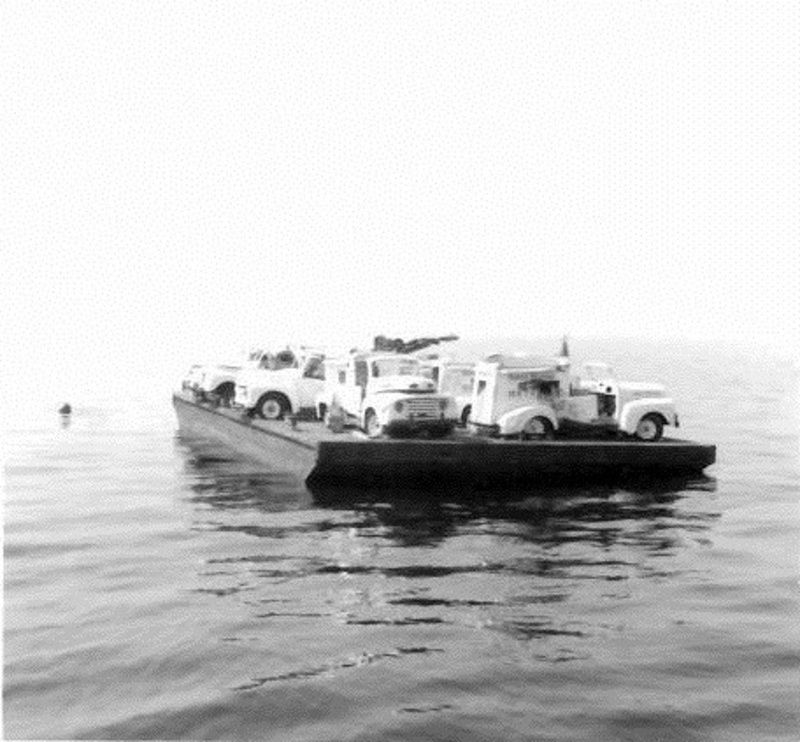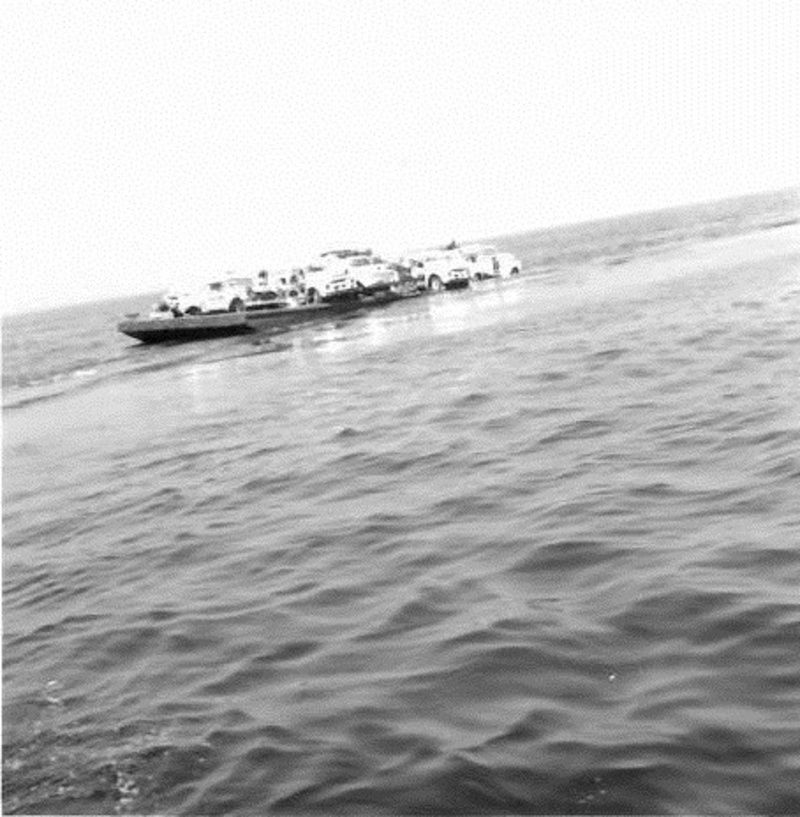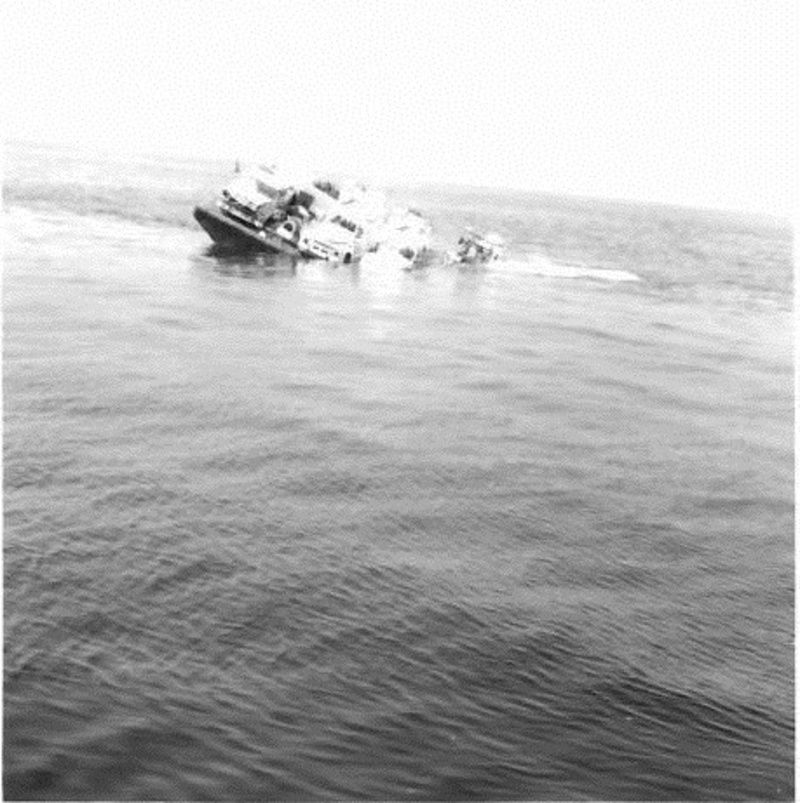Last-Minute NYC Holiday Gift Guide 🎁
We’ve created a holiday gift guide with presents for the intrepid New Yorker that should arrive just in time—


The bottom of the ocean is a mysterious place, often home to many objects that are not naturally part of marine life. However, some of these confusing objects found on the ocean floor were not victims of falling overboard or sinking ships, they were actually placed there on purpose. Since its official establishment in 1962, the Department of Environmental Conservation (DEC) Artificial Reef Program has been sinking unlikely objects with the hopes of promoting biodiversity off the shores of coastal states. One of their most iconic projects took place in the mid-1960s when they sank a fleet of Good Humor ice cream trucks.

The ice cream trucks were settled at the bottom of the sea on the Atlantic Beach Reef, just off the shore of the Rockaways. The DEC’s intention of using the ice cream trucks wasn’t to provide bottom feeders with sweet treats but rather to create large-scale habitats for fish and other marine life, while also establishing opportunities for economic benefits through fishing and diving-related activities. This has been the continuous mission of the program for many subsequent decades. In 1985, an official National Artificial Reef Plan was approved which aimed to further support efforts of sustaining the water’s biodiversity.
While the thin-metal materials the trucks were made of sadly proved to be too vulnerable to the ocean’s salt water, many years of research and testing have helped to create lasting artificial reefs. All materials now used for artificial reefs must comply with national standards, DEC guidelines, and Environmental Protection Agency’s best management practices. Pollutants such as petroleum products and polychlorinated biphenyls (PCBs) must be removed from any object before deployment, and all items must undergo an inspection by the United States Coast Guard. More recently most artificial reefs are primarily made of concrete, steel, or rock, which have all proved to be the most durable and compatible materials with the ocean’s saltwater.

New York permits 16 artificial reef sites containing a total of 6,812 acres, though only a portion of that currently has artificial reef pieces on them. With five reefs in the Long Island Sound, two reefs in Great South Bay, and nine reefs in the Atlantic Ocean off the south shore of Long Island, New York City is closely connected to the quickly-progressing concept of artificial reefs.
While many of these artificial reefs are made of unique and notable objects such as school buses, tires, and old military tanks, some are just plain bizarre. One of these instances was born in 2017 through a Department of Environmental Protection (DEP) project. Instead of ice cream trucks, the DEP sent 5,000 crushed porcelain toilet bowls to the bottom of Jamaica Bay, which would one day become a blossoming oyster reef.
Another stand-out artificial reef material close to New York City‘s heart is the use of retired subway cars. Between 2001 and 2010, the Metropolitan Transit Authority sank 2,580 cars into the Atlantic Ocean off the coasts of New Jersey, Maryland, Virginia, Delaware, South Carolina, and Georgia, to give the rusted old cars a new lease on life. The most iconic subway car artificial reef is the Redbird Reef (named after the line of subway cars) off the Delaware coast, which is home to 714 cars, as well as 86 retired tanks.

All of the artificial reefs in its jurisdiction are continuously monitored by the DEC through a variety of methods including underwater remote-operated vehicles, monitoring dives, aerial reef surveys of site usage, and many more. The DEC also partners with Stony Brook University School of Marine and Atmospheric Sciences to conduct further research.
By gathering this information and keeping logs, the DEC can keep track of ocean life and reef progress. They have been able to make new theories based on log data, tracking at least 40 species that have been found on their artificial reefs. Reefs can even serve as feeding grounds for large sea creatures like dolphins and sharks. Other species that have flourished with the implantation of these reefs include sea bass, mackerel, tuna, blue mussels, flounder, and many others. The DEC has also determined that fish aggregations (gatherings) are 8 times more likely on-reef as opposed to off-reef and that the on-reef aggregations are typically 4 times as large, in terms of biomass.
Some aren’t fans of artificial reefs as they can cause damage to natural habitats when done incorrectly or may result in aggregations that are easier to mass-fish. Generally speaking, however, most environmentalists see the potential benefits of the structures, including relieving some of the pressure of overfishing natural reefs, drawing attention to ocean biodiversity conservation through increased engagement by divers, and providing shelter for smaller fish lacking a natural reef to call home.
Many of the reefs have been made possible by the help of fishing and diving clubs, government agencies, private businesses, and individuals looking to help protect our oceans, primarily through donations of materials and resources. Those interested in adopting a site to build a patch reef on or getting involved in donating can email artificialreefs@dec.ny.gov.
Next, check out these 10 outrageous ice cream desserts to try in NYC!
Subscribe to our newsletter